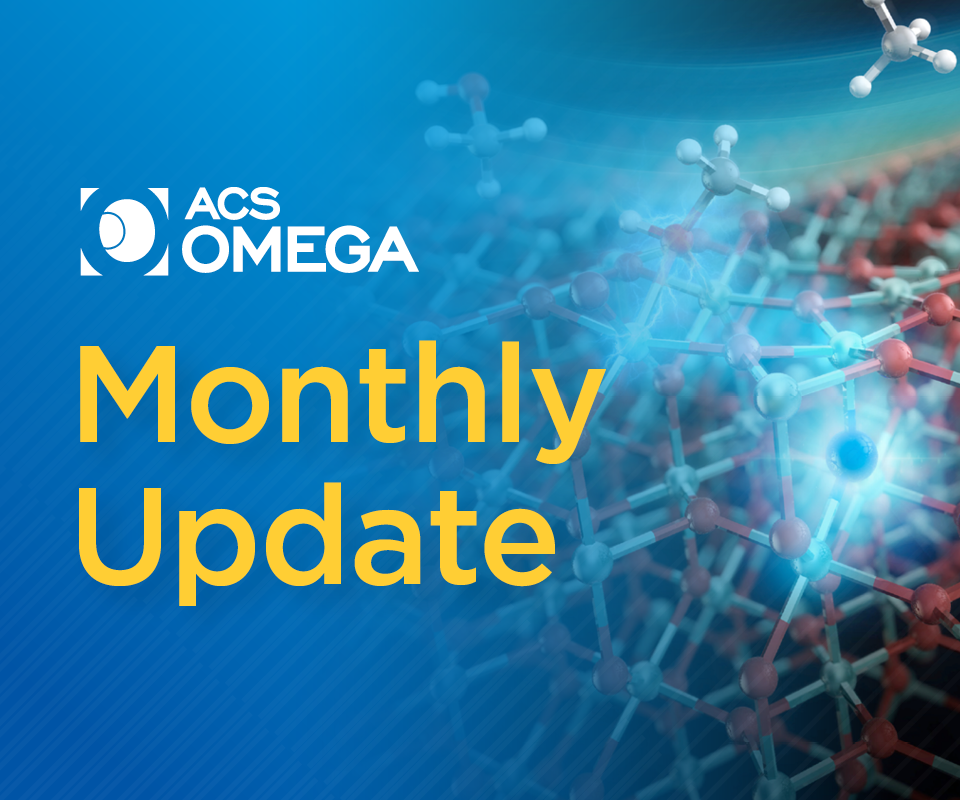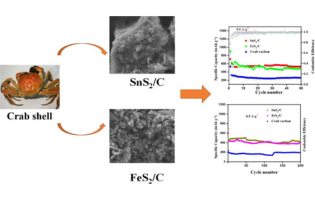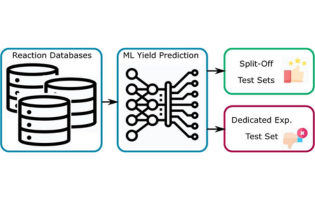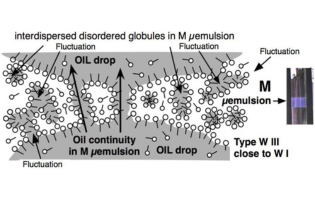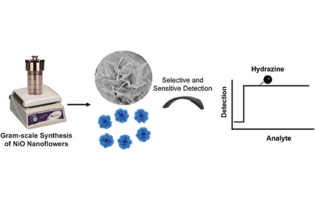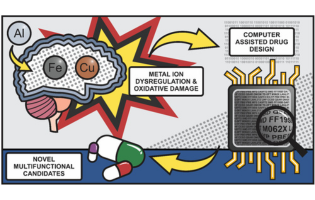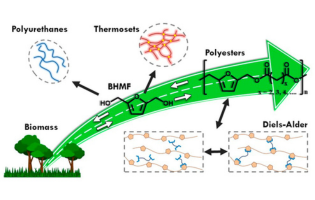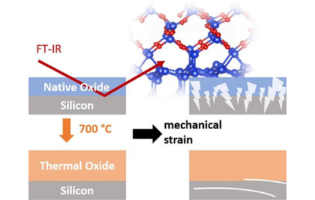What's New
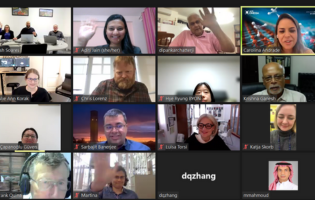
All-Editors' Meeting
On the 29th March, we held our first All-Editors meeting for this year. It is a pleasure to welcome so many new faces to ACS Omega!
Our founding Co-Editor, Prof. K.N. Ganesh, remarked on how diverse and strong the ACS Omega community has grown since its launch in 2016. Seven years and counting, and we haven't looked back!
ACS Omega - In The News
Researchers have upcycled crab shells into porous, carbon-filled materials with a wide range of applications, including creating anode materials for sodium-ion batteries. Sodium-ion batteries are an up-and-coming competitor to lithium-ion batteries, and the use of hard carbon made from crab shells as a viable anode material could help address the limited availability of lithium metal. The researchers combined crab carbon with tin sulfide or iron sulfide to create a sodium-ion battery anode with good capacity and durability, potentially paving the way for more sustainable battery technologies.
Reference: Yun Chen et al, Crab Shell-Derived SnS2/C and FeS2/C Carbon Composites as Anodes for High-Performance Sodium-Ion Batteries, ACS Omega (2023).
Derek Lowe’s blog on drug discovery and the pharma industry, "In the pipeline", features an article published by ACS Omega on "Machine Learning C–N Couplings: Obstacles for a General-Purpose Reaction Yield Prediction".
In the paper, the authors from pharmaceutical company La Roche deliberately take on a difficult synthetic challenge, predicting yields (and thus suggesting reaction conditions) for metal-catalyzed C-N couplings.
In his blog, Lowe, with his usual wittiness, amplifies the authors' conclusions on the importance of having "good" data to feed to the model. Notably, negative results are also as important as positive ones, but don't often reach publication. "We now realize that these negative results are gold, not garbage, when it comes to training machine-learning models."
Additionally, results have to be in a comparable format. "We are, in the end, probably going to have to turn the robots loose and replicate big swaths of the literature under controlled conditions. The machines are going to force us to get our house in order."
Reference: Martin Fitzner et al., Machine Learning C–N Couplings: Obstacles for a General-Purpose Reaction Yield Prediction, ACS Omega (2023), DOI: 10.1021/acsomega.2c05546
Key Journal Metrics
- ACS Omega published 309 articles in March 2023. As compared to the equivalent timeframe in 2022, this represents a 0.5% increase in published output.
- In March, we hit one million downloads for articles published in ACS Omega (1,172,154 downloads exactly). This represents a 43.8% increase in usage compared to the equivalent time period in 2022.
Published Issues
pp. 8125-8910
pp. 8911-9683
pp. 9684-10640
pp. 10641-11642
Featured Articles
This paper clarifies important concepts of the terminology used in the description of bicontinuous microemulsions. More precisely, the paper presents arguments that clearly show that microemulsion is not a true emulsion and microcurvature is not the usual curvature concept in ordinary (macro)emulsions. The results of this paper are relevant for those researchers interested in emulsion science and technology.
Jean-Louis Salager, et al. Universidad de Los Andes, Venezuela
ACS Omega 2023, 8, 10, 9040-9057
The study presents a new, simple and low-cost method for synthesizing nickel oxide (NiO) nanoflowers. The synthesized NiO nanoflowers were found to exhibit high electrocatalytic activity towards the detection of hydrazine with excellent selectivity and sensitivity. The researchers demonstrated the potential use of these NiO nanoflowers as an efficient electrocatalyst for the detection of hydrazine, a toxic and carcinogenic compound commonly found in industrial wastewater. The results suggest that the developed NiO nanoflowers could be used as a promising material for environmental monitoring and industrial applications.
Anderson G. M. da Silva*, Pontifícia Universidade Católica do Rio de Janeiro, Marco A. S. Garcia* et al., Universidade Federal do Maranhão, Brazil
ACS Omega 2023, 8, 13, 11978–11986
This article discusses the involvement of metal cations, such as copper, iron, and aluminum, and multifunctional ligands in Alzheimer's disease (AD). The article provides experimental and computational insights into the interactions between these metal cations, ligands, and amyloid-beta (Aβ) peptides, which are known to play a crucial role in the formation of AD plaques. The authors highlight the complex nature of metal ion interactions and the importance of understanding the underlying mechanisms to develop effective treatments for AD.
Areli Flores-Gaspar, Universidad Militar Nueva Granada & Jorge Alí-Torres, et al. Universidad Nacional de Colombia, Bogotà
ACS Omega 2023, 8, 5, 4508–4526
The study presents a new approach to utilizing biobased 2,5-bis(hydroxymethyl)furan (BHMF) as a sustainable building block for polymeric materials. The researchers synthesized a series of BHMF-based monomers and polymerized them to form new polymeric materials with varying properties. The resulting materials were found to have good thermal stability, mechanical strength, and tunable physical properties.
The study demonstrates the potential of BHMF as a versatile and sustainable building block for the development of new polymeric materials, which can be used in various applications such as coatings, adhesives, and composites. The use of BHMF offers a sustainable alternative to petroleum-based materials and can contribute to a more environmentally friendly and sustainable future.
Katja Loos* et al., University of Groningen, The Netherlands
ACS Omega 2023, 8, 10, 8991–9003
The study presents a new approach to increasing the strain resistance of silicon/silicon dioxide (Si/SiO2) interfaces, which are commonly used in flexible electronic devices. The researchers investigated the effect of various surface modifications on the mechanical properties of Si/SiO2 interfaces under strain. They found that by using a combination of plasma treatment and molecular monolayers, the strain resistance of the Si/SiO2 interfaces could be significantly increased. The study demonstrates the potential of this approach in the development of more robust and reliable flexible electronic devices. The improved strain resistance of the Si/SiO2 interfaces can help to prevent the failure of flexible electronic devices under mechanical stress, which is a critical challenge in the field. The results of this study could lead to the development of more durable and high-performance flexible electronic devices.
Peter Thissen* et al., Karlsruher Institut für Technologie, Germany
ACS Omega 2023, 8, 8, 7555–7565
Previous Newsletters
Click below to view a previous ACS Omega Monthly Update:
© 2025 American Chemical Society, 1155 16th St NW, Washington, DC 20036, USA. View our Privacy Policy


